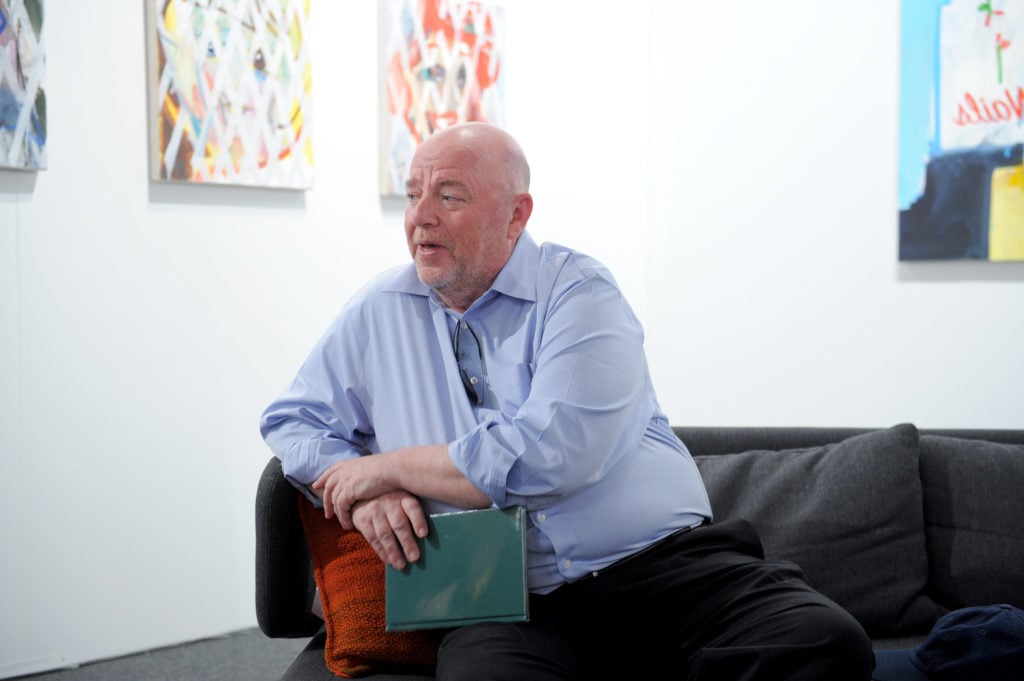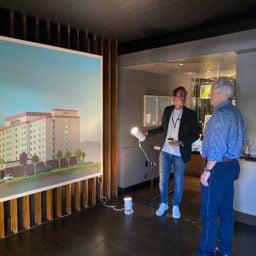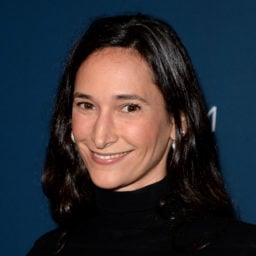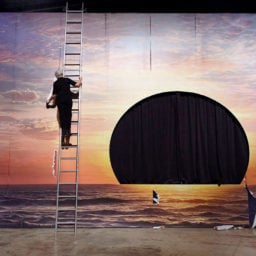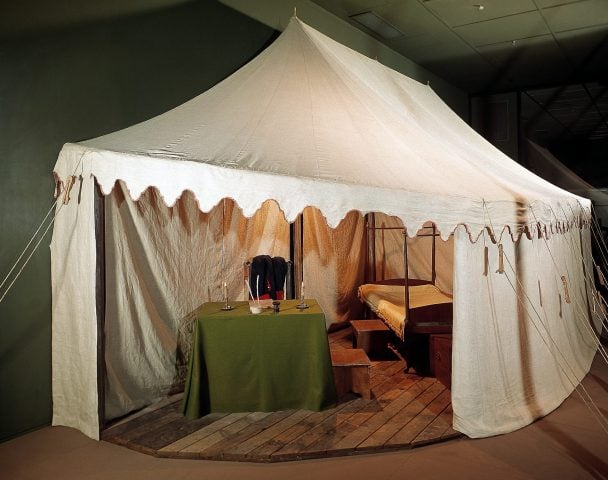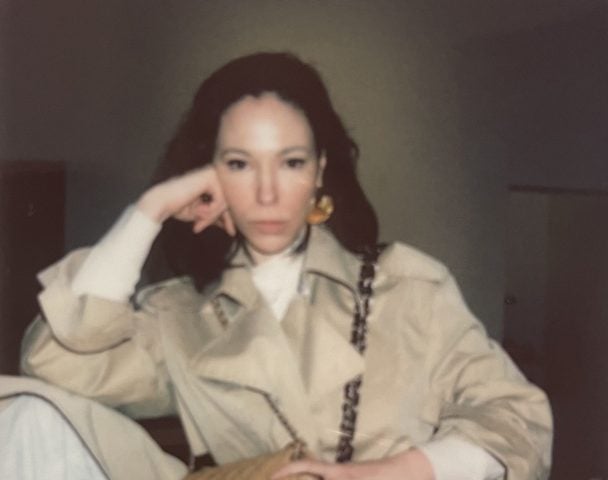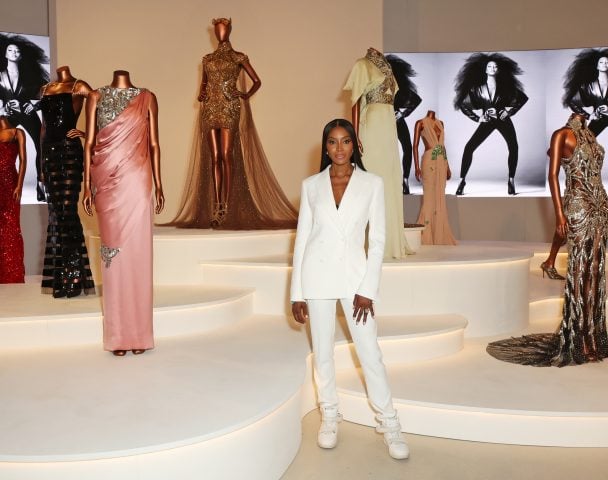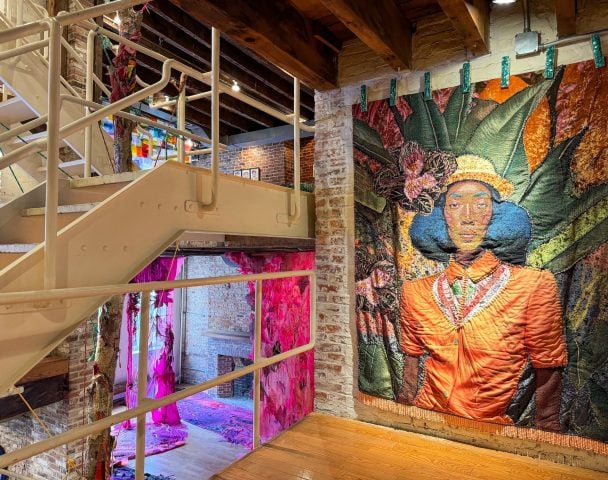Under gray skies, a light drizzle was falling over the pool area at the Hollywood Roosevelt Hotel, but Dean Valentine wasn’t fazed. “There’s going to be a lot of disappointed Europeans,” he joked, “but it’s just weather. Rain has its own charm in LA.”
It was the morning before the inaugural opening of Felix, the new art fair Valentine established with the Morán brothers, Al and Mills, of West Hollywood’s Morán Morán gallery, and the collector-turned-fair founder was doing a last minute walkthrough before exhibitors arrived. I was along for the ride.
Sporting a baggy, blue hooded sweatshirt over his thickset build, Valentine could have been mistaken for one of the art handlers unloading artwork, rather than one of LA’s most prominent collectors of contemporary art. The TV mogul—a former president of both Disney TV and UPN—has long been a champion of emerging artists, especially Angelenos, searching out undiscovered talent rather than established names.
“I have much more fun with art that hasn’t been validated yet, because I get to be part of that validating process,” he told the Robb Report in 2011.
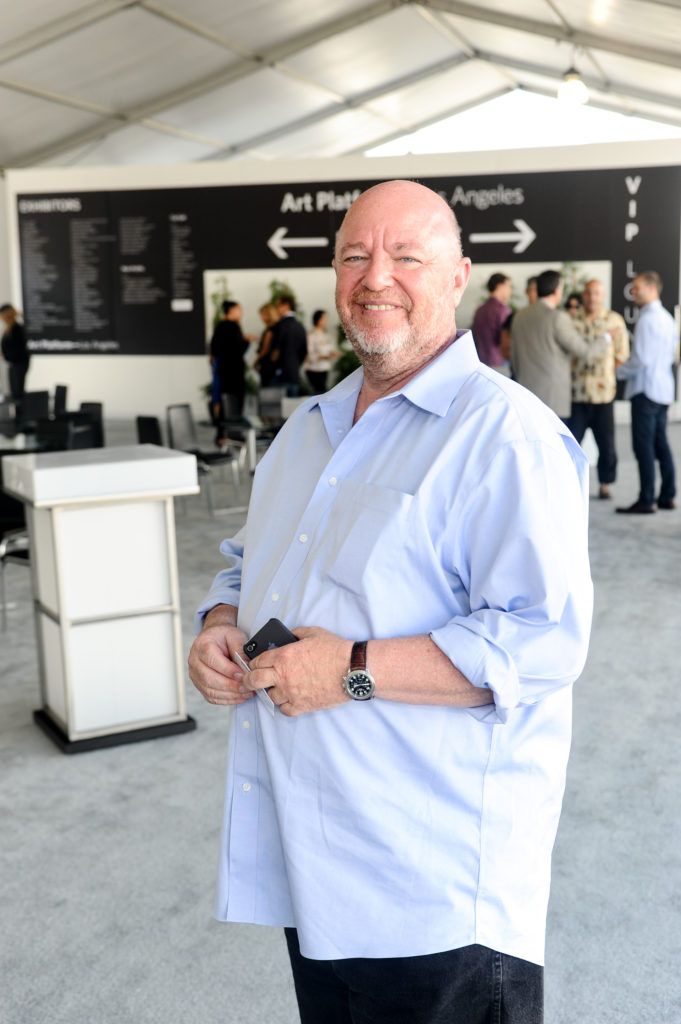
Dean Valentine in Santa Monica. Photo: StefanieKeenan/WireImage
For Felix, Valentine drew inspiration from art fairs of a slightly earlier era, specifically the Gramercy International, which took over the Chateau Marmont in 1994. Instead of the sterile tent structure that has become standard in the art-fair circuit (and currently occupies Paramount Studios for the inaugural Frieze Los Angeles), Valentine and the Moráns chose the Hollywood Roosevelt, a classic Tinseltown fixture that hosted the first Academy Awards in 1929, as their site. “The hotel is part of the drama,” he told me.
The 40 invited galleries—a international mix of established names like Marlborough and White Columns alongside smaller spaces including Smart Objects and Grice Bench—will occupy cabanas around the pool and rooms on the 11th floor. A series of individual projects by artists including Jacolby Satterwhite, Kaari Upson, and Heri Dono will take shape throughout the hotel.
“The idea was always intimacy and connection,” Valentine said. “When you walk into a room, you’re walking into a private space, it’s human space. A booth is transactional space.”
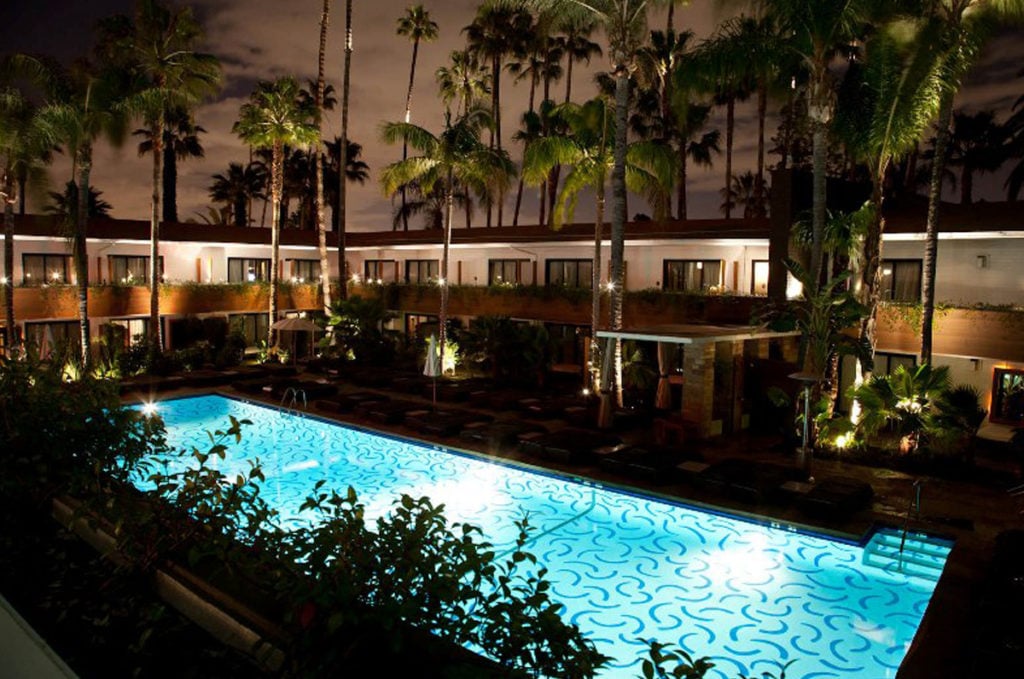
The pool at the Hollywood Roosevelt, painted by David Hockney.
Getting Ready for Showtime
We begin the day in a makeshift office located just off the hotel’s iconic pool, the basin of which was painted by David Hockney in 1987. The first hiccup: one member of his team announces that the rooms on the 11th floor won’t be ready until 2 p.m. Valentine shrugs. “Well, just tell [the exhibitors] they can open their Mezcal early,” he quips, referring to the bottles of Sacrvm Mezcal that will fill the exhibitor welcome bags, alongside other fair staples like mints, hand sanitizer, a beer cozy, and energy bars.
Then we’re off to inspect each of the rooms that exhibitors will occupy, making sure every detail is taken care of. Turning a domestic space in a venue for commerce presents a few challenges. A large headboard against the wall in each room severely limits the amount of wall space for art, so Neal Bashor, the fair’s jack of all trades, has constructed a plywood wall that mounts over the headboard.
“It’s really underlit,” Valentine notes of the hotel’s tastefully dim lighting, before sending Bashor on an Ikea run to pick up a few dozen floor lamps and brighter bulbs.
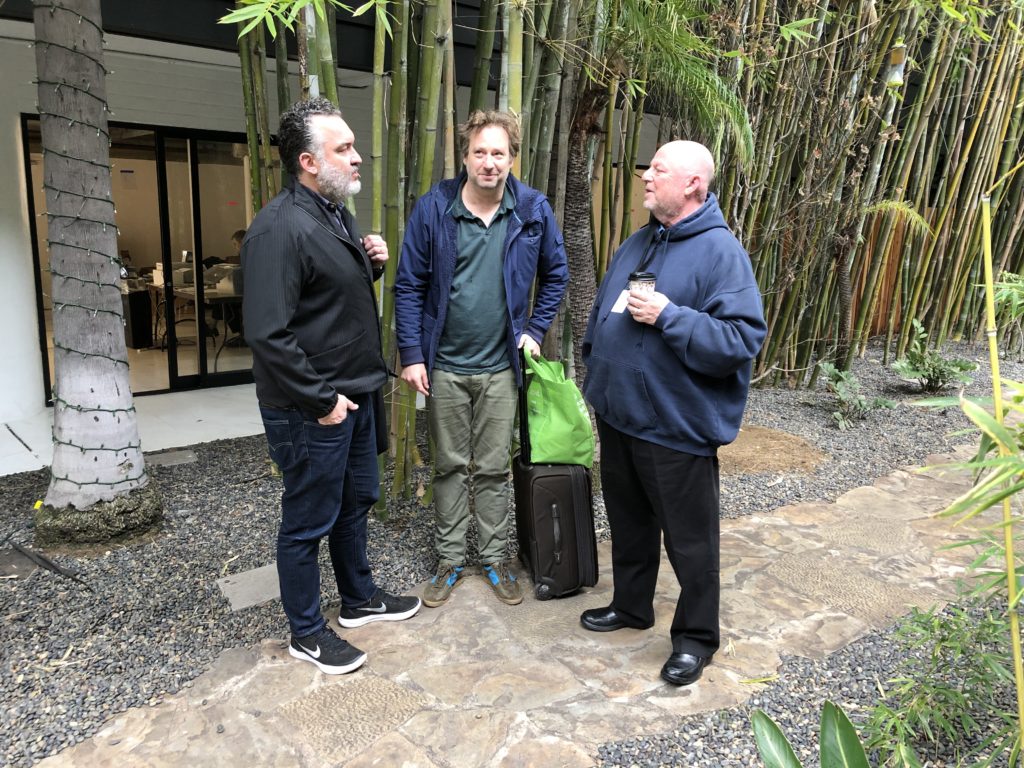
From left: Mills Morán, Joel Mesler, and Dean Valentine. Photo: Matt Stromberg.
On our way, we run into Mills Morán who’s just arrived with artist and dealer Joel Mesler of East Hampton’s Rental Gallery. “Everyone’s talking about Felix!” exclaims Mesler. The fair is only one of six hitting the city this week, alongside Frieze, also making its LA debut, and hometown veteran Art Los Angeles Contemporary (ALAC), where Valentine is also on the host committee.
For Valentine, the more the merrier. “I don’t view these as competitive things,” he says. “We want every fair to do well, but we’re doing something different.”
With participation costing between $4,000 to $8,000 (capping out at $10,000 for the 13th-floor penthouse), Felix offers an affordable option for mid-level dealers, a segment of the market that has struggled to remain afloat in a top-heavy sector dominated by mega-galleries and auction houses.
As a result of the relatively affordable price point for dealers (the main section of higher-gloss fairs like Art Basel, for example, typically cost more than double), the pressure to sell is lower. “If I do one small deal, I’m fine—I paid for the whole thing,” says Mesler, who’s collaborating with fellow artist-dealer (and artnet News columnist) Kenny Schachter on a two-room group presentation. “I’m not stressed.”
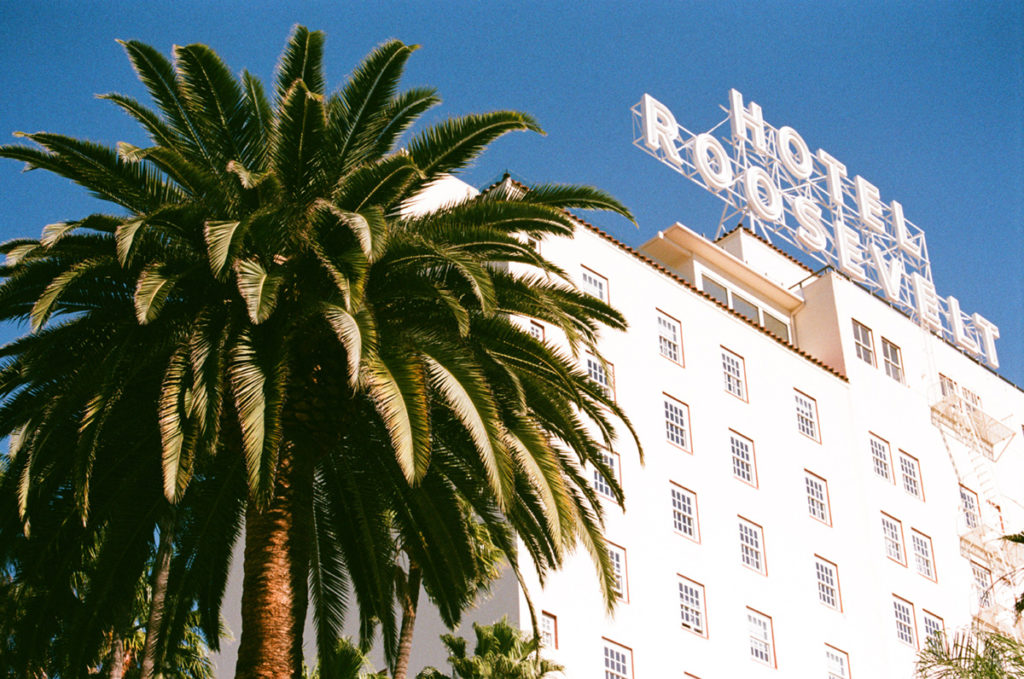
Exterior of the Hollywood Roosevelt Hotel.
Lights, Camera, Art Fair!
Moving down the hallways, Valentine greets everyone—housekeeping staff, art handlers, and newly arrived gallerists—with the same affable sincerity. We pass a series of photographs on the walls capturing a bygone era of Hollywood life, depicting bikini-clad women by the pool, or Hugh Hefner surrounded by Playboy Bunnies.
“I find these pictures depressing,” he says of the hotel art. Interspersed among these images of “bougie white people,” as Valentine puts it, he’s asked young gallerist Carlye Packer, of the defunct downtown space Club Pro, to curate a selection of paintings by Brandon Landers, a young African-American artist from Bakersfield. “I think it’ll activate the hallways in a really cool way,” he says.
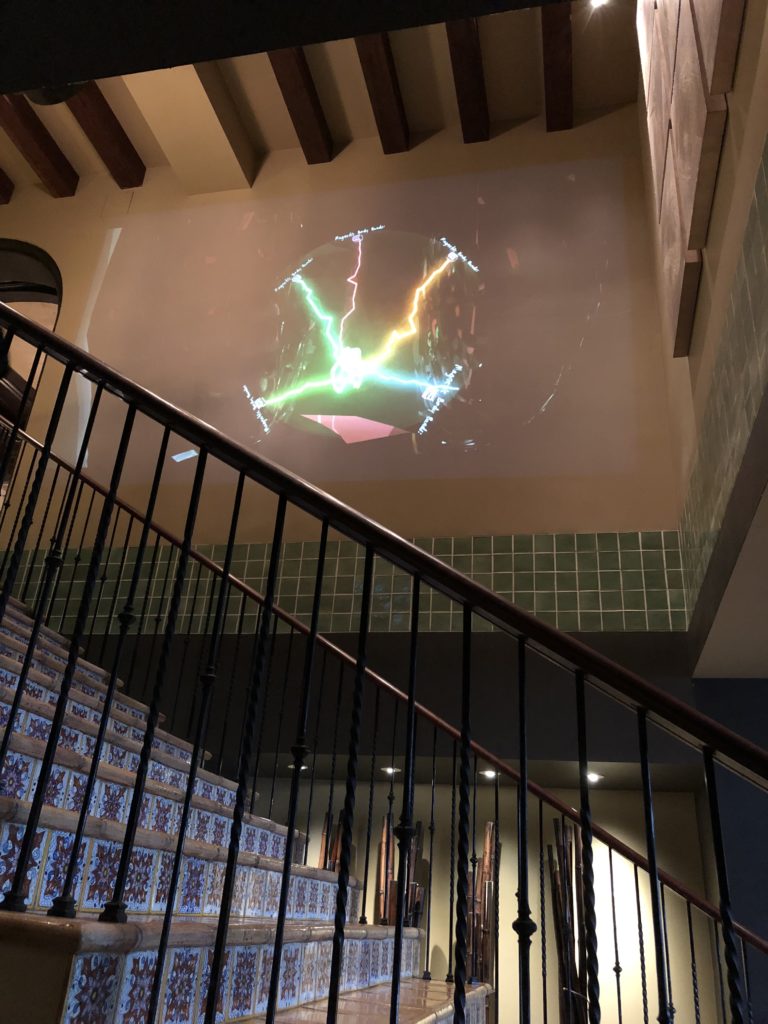
A projection by Jacolby Satterwhite in the hotel. Photo: Matt Stromberg.
Up on the 11th floor, Valentine notes every flaw—a hole in a wall that needs patching, a scuff that needs repainting—before texting an assistant. I tell him I find it unusual for the founder of a fair to be involved in such minutiae. “I feel an obligation,” he says. “I invited these people personally, so I take it personally.”
From the windows up here, guests can look down on iconic LA landmarks: Mann’s Chinese Theater, Madame Tussauds, Hollywood High School, with the skyscrapers of downtown in the distance.
After a quick spin, we’re back in the lobby, where gallerists and artwork have begun to arrive. The 11th floor still isn’t ready, so disgruntled dealers are lounging atop their suitcases, many having already been delayed by inclement weather in New York. Valentine greets the new arrivals, assuaging their anxieties with his low-key demeanor.
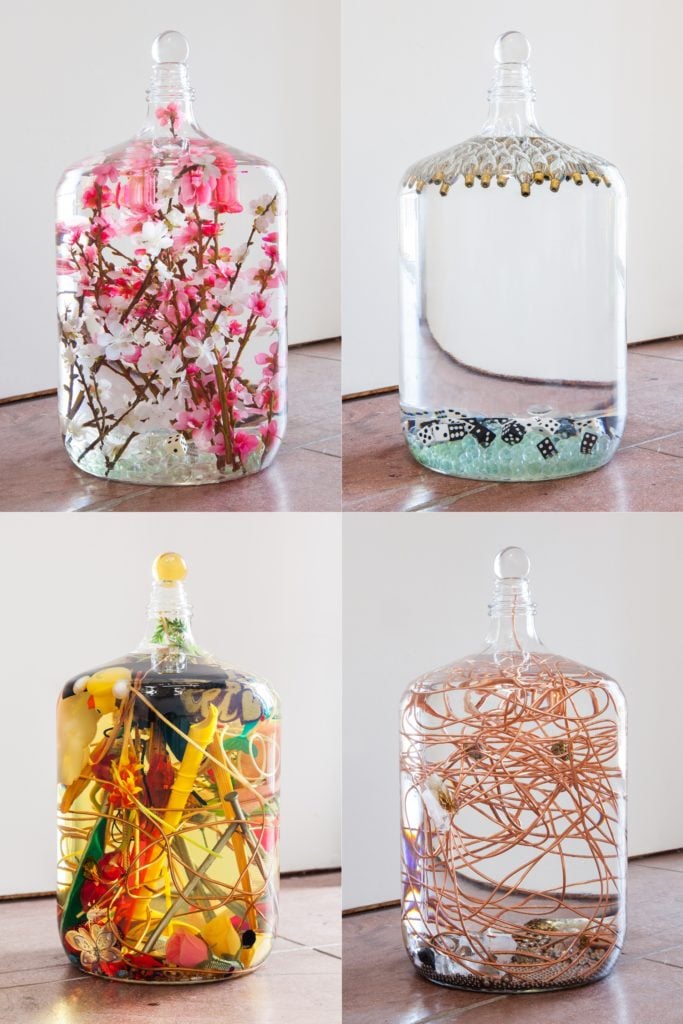
Lazaros’s “Astral Oracles” courtesy of Five Car Garage.
Nearby, local artist Lazaros is installing his mystical special project, presented with the Santa Monica gallery Five Car Garage, consisting large glass jars filled with flowers and other objects suspended in mineral oil that he calls “spells.” “His work is great, isn’t it?” beams Valentine, as the artist shows him a Vogue article about the fair on his phone.
Lazaros notes how relaxed Valentine looks, to which he coolly replies, “there’s no use in worrying about what you don’t have control over.” After spending the morning with Valentine ahead of his art-fair debut, that seems in line with general vibe of Felix, where dealers, artists, collectors, and curators can come together without the pressure and pretense of a big-tent fair.
“We wanted people who were committed to art,” Valentine says of the exhibitors. “We’d love to have large galleries, but it’s more about people who are passionate about what they’re doing and who they show. That was the most important thing for us. We believe in their vision.”
The Felix Art Fair is at the Hollywood Roosevelt Hotel, 7000 Hollywood Boulevard, Los Angeles, through February 17.
Follow Artnet News on Facebook:
Want to stay ahead of the art world? Subscribe to our newsletter to get the breaking news, eye-opening interviews, and incisive critical takes that drive the conversation forward.
